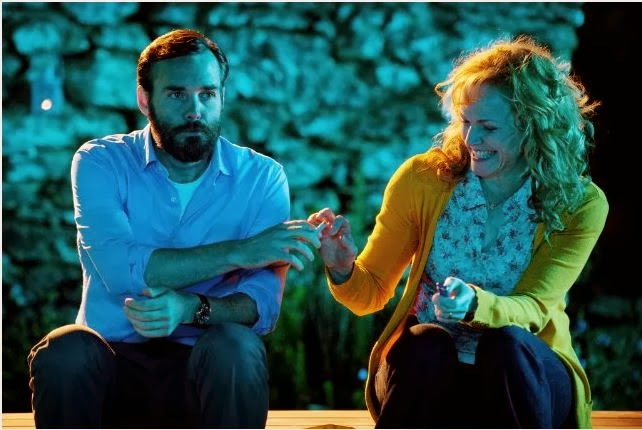Movies about psychiatry tend to follow the same blueprint. In their own way, they're as predictable as westerns or splatter films. There are usually scenes where the doctor sits at home, pondering the case over dinner. The patient moves like a specter through the doctor's mind, haunting him a bit, baffling him. Ultimately, the patient triumphs over his or her problems, and the doctor learns something about him or herself along the way. Jimmy P.: Psychotherapy of a Plains Indian, follows the usual route, but the pulse of this film is so weak that it barely sticks in the memory. Of course, I blame myself for expecting too much. Since the film is set in the 1940s, I'd imagined something like The Snake Pit crossed with One Flew Over The Cuckoo's Nest, or at the very least, a period piece about the cruel treatment of mental patients after WW2. Of course, I understand that preconceiving a film in this manner does the work a disservice. A peeve of mine when reading other reviews is when someone writes, "Gee, I thought this film was going to be like another film, and it wasn't, so I'm let down..." Such reviewing is not thoughtful. So I apologize, mostly to director Arnaud Desplechin, who made a quality film, unusual in its tone and pacing, but featuring some fine performances.
I apologize to the cast, who were all very fine, particularly Benicio Del Toro as Jimmy Picard, the Jimmy P of the title, a Native American who returns from the war suffering from blinding headaches and blackouts. He's taken to a clinic where doctors feel he may be suffering from serious mental problems but are hesitant to treat him because they aren't familiar with his culture. Georges Devereux, an out of work anthropologist from Brooklyn (Mathieu Amalric), is brought in to study Jimmy. Devereux, who is fascinated by Indian cultures, fills notebooks with Jimmy's every grunt. They spend a major portion of the film just chatting. Georges has Jimmy do some finger-painting, and from Jimmy's drawings he decides Jimmy is not crazy at all. Georges and Jimmy develop a friendship of sorts, a cautious one. By the end of the film, the dour Del Toro is smiling, and telling Georges, "I think you're very weird." In a film where very little happens, this friendly moment is like an atomic charge. Oh, I should apologize to Amalric, too. He's very good as Georges Devereux, caustic, wry, occasionally funny. I liked both characters, and I liked both actors playing the characters.
Del Toro is riveting as Jimmy. Shuffling around like an old bear, speaking in a halting voice, he tells stories of his losses and sorrows, mystified at how they happened, and equally mystified as to why they have such a concrete hold on his mind. Over the course of the film we begin to understand the depths of his sadness. Georges has problems, too, with his career, and with his love life. The hospital doesn't seem to have the usual spaces reserved for such therapy sessions as Georges and Jimmy are involved in, so their meetings are often in small rooms, closets, or outdoors. They walk and talk. Jimmy doesn't like being in a place where everyone is so sick, and we do get the prerequisite scenes of other patients acting out, hurting themselves, and screaming. They climb the walls and stick knives in their hands. There are suicides. Jimmy takes it all in. He's inscrutable. As repulsive as the place may be, Jimmy wants to get better. He sticks with Georges and the "talking cure." He's an admirable character.
Fortunately, there are no turgid scenes where Del Toro breaks down and cries hysterically at some long hidden memory, and Georges never grinds him down by saying, "it's not your fault," and they don't hug, and it doesn't turn out that Jimmy accidentally killed anybody in a barn, and he doesn't have submerged memories of the war. I was thankful that his problems were not anything we may have seen in Good Will Hunting or an episode of late period M.A.S.H. He was simply a sensitive man who experienced some sad things in his life, things you or I might have experienced.
The story is based on a true case written about by Devereux. I imagine Devereux's book is very enjoyable. I also imagined this story, heavy on dialogue and subtle acting, might have worked well as a stage play. As a film, it plays like a piece of classical music. There are moments of beauty, moments of quiet, and occasional rises in tempo, all of which should be appreciated, even if you prefer catchier tunes.










